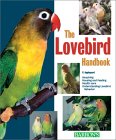Parrotlets
Waco, male Pacific; submitted by Shane
Origin: South America (various areas depending on species)
Species:
Pacific parrotlets, Forpus coelestis
Green-rumped parrotlets, Forpus passerinus
Mexican parrotlet, Forpus cyanopgius
Blue-wing parrotlet, Forpus xanthopterygius
Spectacled parrotlet, Forpus conspicillatus
Yellow-faced parrotlet, Forpus xanthops
These diminutive parrots often have a feisty, courageous nature that belies their tiny size. The beak is quite large in proportion to the body. Many people refer to them as “amazons in pint-sized bodies” because of their often fearless nature. The most popular pet species are the Pacific, Mexican, and green-rumped species. Other species are rare or best left in breeding programs. Many claim that the green rumps are the most gentle of the various species, although all three species can make nice pets if hand-fed and properly socialized.
Talking and Noise: Can mimic, but the voice is very small and sometimes it is difficult to recognize words. Natural sounds are very pleasant chirps. Rarely a noise problem so they make good apartment birds.
Caging: Lovebird or cockatiel size cage. Make sure bar spacing is appropriate for a very small head. Make sure there are horizontal bars for climbing. Add lots of toys and swings for playing because these are very active birds (see photo to the left of Mini; photo submitted by Manon Roos). It is best to have a grating on the bottom of the cage that separates them from the floor of the cage.
Diet: Small hookbill, small or mini pellets, and fresh vegetables. In the while they eat fruit and berries, so these can be a nice addition to the diet. Some whole grains such as cooked quinoa, sprouted bread, and millet on occasion.
Health: Hardy birds but prone to accidents because they are very small. They must be supervised at all times when out of the cage. They tend to like to hide sometimes behind cushions, which can have obviously dire results if you are unaware of where they are at any given moment. I have heard a number of stories of parrotlets being stepped on. If the bird is not on your shoulder on in its cage, keep your eye on it.
Noise: Pleasant chirping. Rarely a noise issue.
Training/Behavior: They can be quite willful, so train these birds the same way you would a larger amazon parrot. Always teach the up command, and remove them from their cage using this command every time. Must be supervised when out of the cage at all times. While this is true of all parrots, these ones need particular supervision due to their very small size and the potential for great injury if they are not noticed on the floor or the like.
Sleep: At least 10 hours of darkness and quiet. A tv in the room does not equal good sleep.
Sexual behavior: Males will regurgitate, sometimes rub on perches, toys, or you. Females can become aggressive if you encourage nesting. Avoid sleeping huts or boxes if you have a hen you want to remain tame, and do not give her access to nesting material.
Breeding: Best for breeders with moderate experience. Tend to breed best when more than one pair are in the same area where they can hear each other. Many people trying to breed a single pair have found this to be difficult if not completely fruitless.
(bottom photo of Mini; submitted by Manon Roos)











